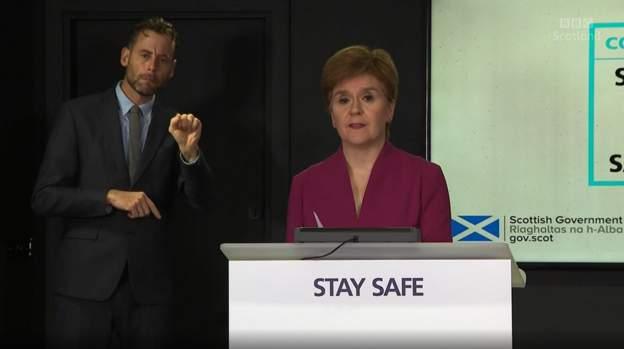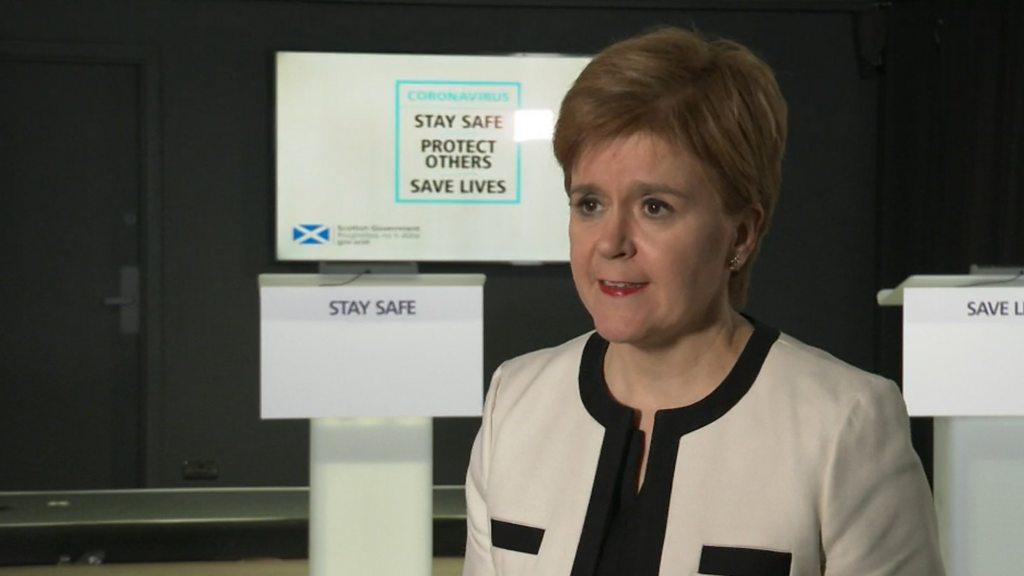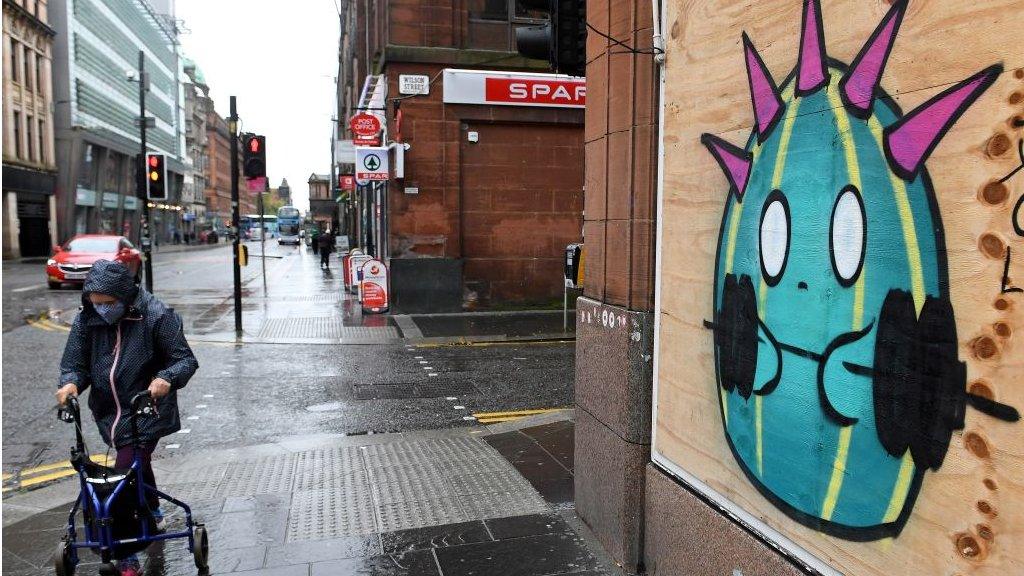Coronavirus: New cases in all Scottish mainland areas
- Published

More than 170 new cases were reported in total, with 91 in NHS Greater Glasgow and Clyde
New coronavirus cases have been detected in every mainland health board area in Scotland in the past 24 hours.
There have been 176 positive tests across the country since Monday, including 91 in NHS Greater Glasgow and Clyde - where visiting restrictions are in force.
First Minister Nicola Sturgeon also said that three people had died after testing positive for the virus.
This is the highest number of deaths by that measure since 30 June, she said.
As well as the 91 cases in the Greater Glasgow area, 32 were detected in NHS Lanarkshire and 16 in NHS Ayrshire and Arran.
The remainder were spread across the other mainland health boards - although there were no new cases in the Western Isles, Orkney or Shetland.

The Scottish government imposed new lockdown restrictions on Renfrewshire and East Dunbartonshire on Monday evening, and extended existing restrictions in Glasgow, East Renfrewshire and West Dunbartonshire for a further seven days.
The measures bar 1.1 million people in those areas from visiting other households and prohibit them from visiting homes in other local authorities.
New cases per 100,000 people, a key figure in the decision to impose local restrictions, have risen across Greater Glasgow and Clyde.
In West Dunbartonshire, there were more than 60 new cases per 100,000 people in the area, almost double the rate when visiting restrictions were imposed.
The same was true in Glasgow city, which had 22 new cases per 100,000, but has seen an increase to more than 44.
In Renfrewshire and East Dunbartonshire, the rate is 32.4 and 29.5 respectively.
Meeting in pubs, restaurants and outdoor areas is still permitted - although the Scottish government said the situation would be monitored in the coming days.
Director of public health for NHS Greater Glasgow and Clyde, Dr Linda de Caestecker, warned that the rise in cases in some local authorities could be driven by the hospitality industry.
She said: "When we examine the rate per 100,000 population it is highest in West Dunbartonshire where many cases relate to family gatherings and parties.
"The next highest rate is in Glasgow city where more cases are associated with visits to bars and restaurants."
The government said it was also keeping the situation in Inverclyde and Lanarkshire under review - although Ms Sturgeon said a rise in the number of cases in the two areas did not yet warrant additional restrictions.
The overall incidence rate of the virus in Scotland as a whole was 20 cases per 100,000 people, Ms Sturgeon said - although the figure was slightly higher for the five council areas which are under stricter measures.

There are tougher restrictions on visiting in five local authorities
Ms Sturgeon said the latest statistics were further evidence that the "really unwelcome" decision to impose more lockdown restrictions was a "proportionate" response to rising coronavirus cases.
The first minister also told her daily coronavirus briefing that she did not expect to be able to announce any further easing of restrictions elsewhere in the country when the Scottish government reviews its guidance on Thursday.

Ms Sturgeon has already said she is unlikely to be announcing any further lockdown easing this week
She added: "At this time obviously we want to do everything possible to avoid the situation where more restrictions that have been lifted have to be re-imposed.
"The key to avoiding that rests with all of us - the decisions we make as individuals, still affect the safety and well being of our communities.
"So please do everything you can to avoid creating a bridge for the virus to cross over from one person to another, one household to another."
The first minister also criticised the "really dangerous delusion" that rising numbers of cases among younger people should not be a concern.
She said: "The risk of a young person getting seriously ill or dying is thankfully lower, but it is not zero, and I would ask people of all ages to remember that.
"If transmission becomes established in the younger population, it will eventually reach the older and more vulnerable population. So to younger people, please think about your loved ones as well as yourselves, which I know everybody does.
"And to older people, be even more vigilant about hygiene and distancing if you're spending time with young relatives who may have been in pubs and restaurants."

BACK TO SCHOOL: Can a school insist on a Covid test?
LOCKDOWN EASING: What changes next - and when?

- Published7 September 2020

- Published11 September 2020
